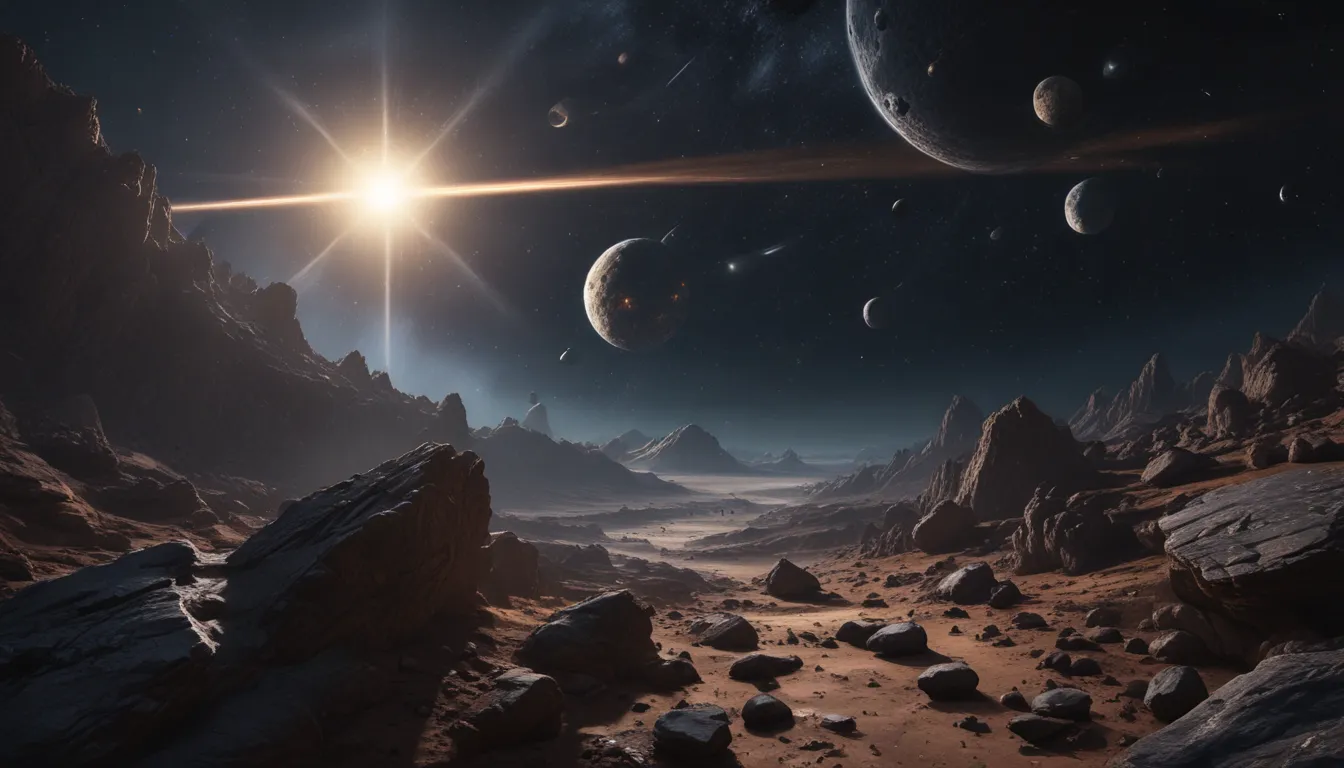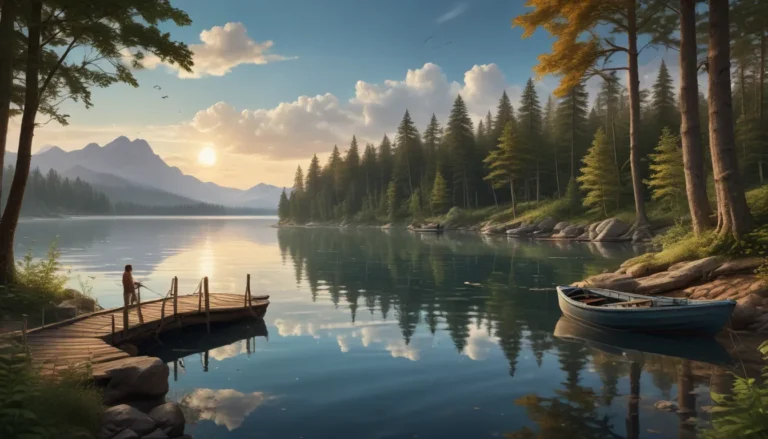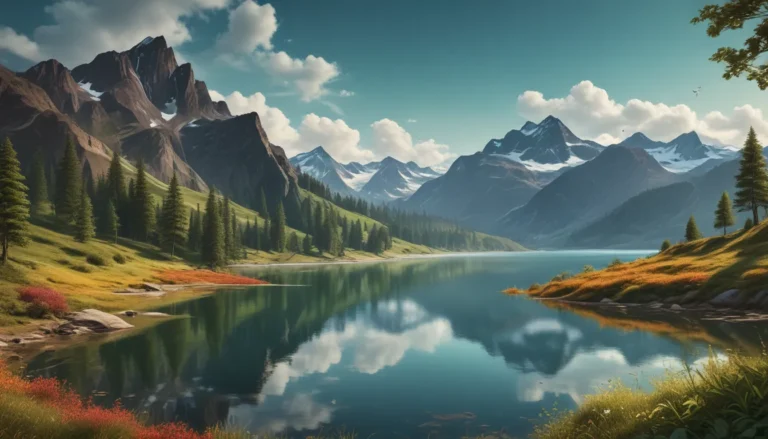The pictures we use in our articles might not show exactly what the words say. We choose these pictures to make you interested in reading more. The pictures work together with the words but don’t take their place. The words still tell you the important facts.
Have you ever pondered the mysterious realm that lies between Mars and Jupiter, known as the Asteroid Belt? This cosmic neighborhood is bustling with rocky remnants from the early solar system, offering a window into the past and shedding light on the secrets of planetary formation. From tiny pebbles to massive dwarf planets, the Asteroid Belt is a playground of space rocks floating in a vast expanse, occasionally creating breathtaking cosmic fireworks through collisions. Are you ready to embark on a voyage through the wonders of this enigmatic zone? Buckle up and prepare to be amazed by some mind-blowing facts about the Asteroid Belt!
Unveiling the Asteroid Belt’s Splendor
The Asteroid Belt is a captivating region of our solar system situated between the orbits of Mars and Jupiter. Here are some intriguing facts about this cosmic neighborhood:
- The Asteroid Belt encompasses millions of asteroids varying in size from minuscule pebbles to colossal rocks hundreds of kilometers in diameter.
- Ceres, the largest object in the Asteroid Belt, is classified as a dwarf planet and contributes about 30% of the belt's total mass.
- The collective mass of all asteroids in the belt amounts to less than 4% of the Moon's mass.
- Unlike planets that are spherical due to their gravity, most asteroids in the belt have irregular shapes.
- With an average distance of about 1 million kilometers between asteroids in the belt, collisions are rare occurrences.
Unraveling the Origins and Composition
Delving into the formation and makeup of the Asteroid Belt can provide valuable insights into the early solar system. Here's a glimpse into its origin and composition:
- The Asteroid Belt took shape from the primordial solar nebula, the same cloud of gas and dust that birthed the planets.
- The powerful gravitational pull of Jupiter prevented these rocky fragments from merging into a planet.
- The belt primarily consists of three asteroid types: carbonaceous (C-type), silicate (S-type), and metallic (M-type).
- C-type asteroids, rich in carbon, dominate the belt's population, comprising about 75% of its inhabitants.
- S-type asteroids are predominantly composed of silicates and nickel-iron, while M-type asteroids consist mainly of metallic iron and nickel.
Venturing into Asteroid Belt Discoveries
Space missions have been pivotal in unraveling the mysteries of the Asteroid Belt, offering valuable insights into these ancient celestial objects. Here are some key missions that have contributed to our understanding:
- NASA's Pioneer 10, in 1972, was the first spacecraft to visit the Asteroid Belt.
- The Dawn mission launched by NASA in 2007 explored both Vesta and Ceres, providing detailed images and data.
- The European Space Agency's Rosetta mission flew by asteroids 2867 Šteins in 2008 and 21 Lutetia in 2010.
- Japan's Hayabusa mission successfully returned samples from asteroid Itokawa in 2010.
- NASA's upcoming OSIRIS-REx mission aims to bring samples from asteroid Bennu back to Earth by 2023.
Fascinating Tidbits About Specific Asteroids
Certain asteroids within the belt boast unique characteristics that set them apart. Here are some fun facts about specific asteroids that pique curiosity:
- Vesta, the second-largest object in the belt, boasts a colossal crater named Rheasilvia, spanning 505 kilometers in diameter.
- Asteroid 243 Ida is accompanied by its own moon, Dactyl, which is approximately 1.4 kilometers in diameter.
- Asteroid 433 Eros was the first asteroid to be orbited and landed on by a spacecraft, NASA's NEAR Shoemaker.
- Asteroid 4 Vesta shines so brightly that it is occasionally visible from Earth with the naked eye.
- Asteroid 16 Psyche is speculated to be the exposed core of a protoplanet and is predominantly metallic.
The Allure of the Asteroid Belt in Popular Culture
The Asteroid Belt has not only captivated scientists but also inspired numerous works of science fiction. Here's a glimpse into its portrayal in popular culture:
- In the "Star Wars" series, the Millennium Falcon navigates through an asteroid field in "The Empire Strikes Back."
- The Asteroid Belt serves as a pivotal location in the "Expanse" series, playing a significant role in the storyline.
- In the video game "Mass Effect," players can traverse the Asteroid Belt and extract resources from its asteroids.
- The movie "Armageddon" centers around a mission to thwart an asteroid on a collision course with Earth.
Embracing the Future of Asteroid Belt Exploration
The journey of unraveling the secrets of the Asteroid Belt continues with future missions and advancements in technology. Here are some forthcoming plans and concepts that promise to deepen our understanding of this cosmic realm:
- NASA's Psyche mission, slated for launch in 2022, will delve into the metallic asteroid 16 Psyche.
- The European Space Agency's Hera mission will investigate the binary asteroid system Didymos and its moonlet.
- Innovations in propulsion technology could enhance the feasibility of sending spacecraft to the Asteroid Belt.
- The prospect of mining asteroids for resources like water, metals, and minerals is being explored as a potential future industry.
- By studying the Asteroid Belt, scientists aim to gain insights that could aid in safeguarding Earth against possible asteroid impacts.
Unveiling Fun and Quirky Asteroid Belt Trivia
Embark on a journey of discovery with these intriguing and unconventional facts about the Asteroid Belt:
- The Asteroid Belt is sometimes referred to as the "Main Belt" to distinguish it from other asteroid groups in the solar system.
- Certain asteroids have been bestowed with names inspired by mythology, renowned figures, and even fictional characters.
Pondering the Cosmic Marvels of the Asteroid Belt
Emanating a blend of wonder and enigma, the Asteroid Belt beckons explorers to uncover its myriad secrets. From its sprawling expanse brimming with millions of asteroids to the fascinating moon companion of some space rocks, this region of our solar system is a treasure trove of celestial marvels. Despite comprising less than 4% of the Moon's mass, the Asteroid Belt's diverse inhabitants and unique characteristics offer a glimpse into the cosmos' ancient history.
Venture into the realm of the Asteroid Belt, where each mission and discovery adds layers to our understanding of these age-old objects. Whether you're a fervent space aficionado or a curious soul seeking adventures beyond Earth, the Asteroid Belt promises endless fascination and intrigue.
As you gaze up at the night sky, ponder the celestial wonders encircling our planet, waiting to be unraveled and explored.
Was this exploration insightful and engaging? Our dedication to providing credible and captivating content is ingrained in every fact we present. Each insight shared on our platform stems from real users like you, enriching our repository with diverse perspectives and information. Rest assured, our meticulous editors meticulously review each submission to ensure the highest standards of accuracy and authenticity. Join us in our pursuit of quality and truth as we delve into the cosmos and embrace the wonders that await.






